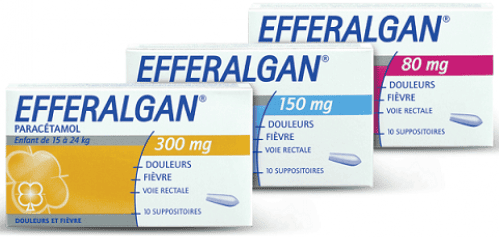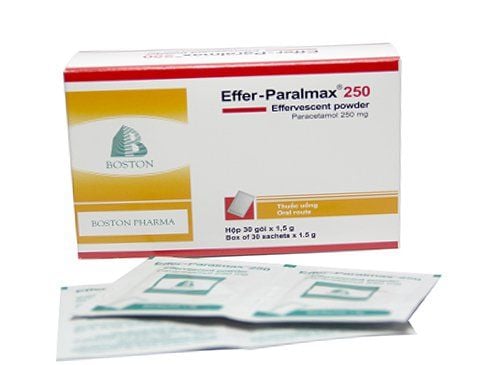This is an automatically translated article.
Persistent fever is a condition of fever above 38 degrees for many weeks (at least 2 weeks), even months without an accurate diagnosis, treated with common drugs such as antibiotics and antipyretics but still no results.
1. What is persistent fever?
Persistent fever is a common syndrome or medical condition in the infectious disease department with the following characteristics:
Fever is the most prominent clinical sign, while other signs are usually faint or absent. Fever persists for more than 38 years. temperature for weeks (at least 2 weeks), even months without an accurate diagnosis, have treated with common drugs such as antibiotics and hypothermia with no results. The diagnosis of a baby with a fever that lasts a long time is sometimes very complicated. It is not possible to find out the cause in just a few days. Even in many cases, after a long period of treatment, they have to be discharged from the hospital but still have not been able to find the cause. diagnose the cause of the persistent fever.
2. Access to diagnosis of persistent fever
2.1. Ask the sick
Fever characteristics: date of onset, duration of fever, degree of fever, type of fever, way of onset of fever Symptoms associated with prolonged fever: bone pain, joint pain, headache, cough, weight loss, frequent urination, drinking a lot of water or difficulty urinating... Asking history: Has the infected person recently traveled to or lived in an endemic area for malaria, typhoid. Have frequent contact with pets or wild animals. History of drug use: pay attention to drugs used by mouth and skin. Previous and effective treatments. Family history, race. History of TB exposure. For children, care should be taken in the status of vaccinations: tuberculosis, viral hepatitis, typhoid, etc. History of medical diseases (acute rheumatism, systemic diseases...) or surgery , obstetrics and gynecology. Pay attention to allergies (food, drugs or other things).

Sốt kéo dài sẽ ảnh hưởng nghiêm trọng đến sức khỏe cũng như cuộc sống sinh hoạt của người bệnh
2.2. Clinical examination
Fever: temperature must be monitored every 4 hours. Assess fever intensity and fever nature. Assess dehydration, especially in case the baby has a high fever over 38 degrees. Assess vital functions: pulse, temperature, blood pressure, breathing rate. Eye examination, ophthalmoscopy. Examination of the peripheral lymphatic system. Ear, nose and throat examination: detect otitis media, tonsillitis, oral thrush in children suggesting immunological pathology and finding sinus pain, systematically examine pharynx and tympanic membrane in children, Skin examination and mucous membranes: gasoline, superinfected wounds, purulent dermatitis, leg ulcers, superficial phlebitis, abscesses at the site of infection... Notice the absence of continuous perspiration. Examination of organs: cardiovascular, pulmonary. Detection of liver and spleen enlargement leads to the diagnosis of infection. Detect associated skin diseases: erythema, purpura, bullous blisters, acne Osteoarthritis: painful swelling on bone suggestive of deep osteomyelitis or bone malignancy, limited joint mobility , increased tendon reflexes. Assess the anemia status of people with persistent fever.
2.3. Five points systematically applied against all forms of fever
Examining the nape of the neck to detect meningococcal syndrome: if in doubt, lumbar puncture (PL) after fundoscopic examination Auscultates the heart for a physical murmur Arterial blood pressure measurement: wide blood pressure interval is suspected aortic regurgitation, arterial hypotension as a warning sign of shock Abdominal examination for splenomegaly, predisposing to sepsis or malaria Fear of death from meningococcal lightning requires urgent hospitalization for resuscitation. Purple veins in the extremities are a sign of hypovolemia and a risk of shock.

Khám bụng là một trong những biện pháp để chẩn đoán các hình thức sốt
3. Note when diagnosing prolonged fever
Diagnosis of drug-induced persistent fever is usually easy when the main disease is absent, fever episodes are often paralleled with courses of medication and a rash accompanied by fever is seen. Regarding the causes of persistent fever, there may be some rare cases as follows: hyperthyroidism (no goiter, no protrusion, only thinness and rapid pulse), neurogenic fever (with confusion). disorders at the temperature regulation center, autonomic nervous system disorders), fever due to metabolic disorders in young children (vitamin C deficiency, iron deficiency, hypochromic anemia in neonates) Need to analyze the possible factors falsify the diagnosis: previous antibiotic use to treat the disease overshadows the typical presentation (loss of leukocytosis... ) or prolonged fever due to drug use may increase white blood cells. There are some cases where the child has a fever that lasts for a long time for which no cause can be found. Because he was hospitalized for many days, he took advantage of many paraclinical measures in the diagnosis without finding the cause, and eventually had to be discharged from the hospital, his illness was worse, or he even recovered on his own. To register for examination and treatment at Vinmec International General Hospital, you can contact Vinmec Health System nationwide, or register online HERE.
MORE:
Fever over 38 degrees persists, what to do? What is a prolonged fever in children? How should it be handled? To what extent does a child have a fever to take fever-reducing medicine?













